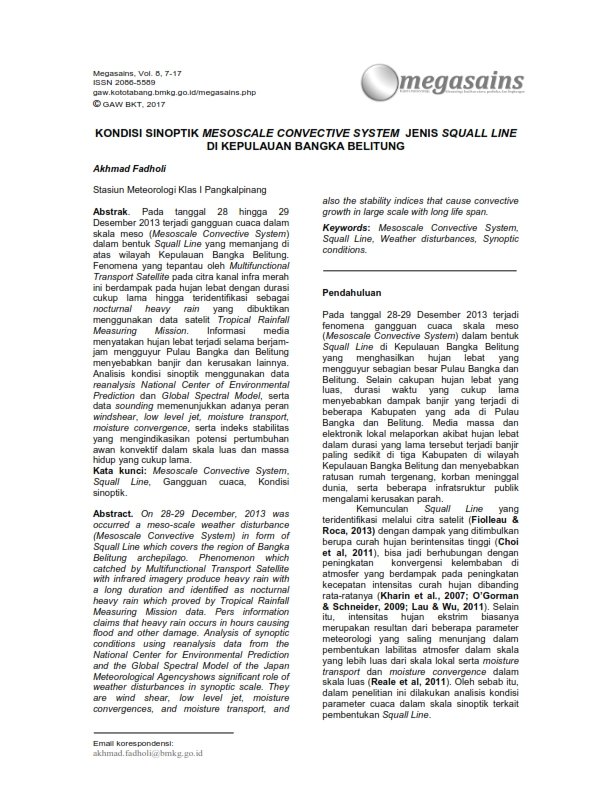SYNOPTIC CONDITIONS OF THE SQUAL LINE TYPE OF MESOSCALE CONVECTIVE SYSTEM IN BANGKA BELITUNG ISLANDS
Main Article Content
Abstract
On 28-29 December, 2013 was occurred a meso-scale weather disturbance (Mesoscale Convective System) in form of Squall Line which covers the region of Bangka Belitung archepilago. Phenomenon which catched by Multifunctional Transport Satellite with infrared imagery produce heavy rain with a long duration and identified as nocturnal heavy rain which proved by Tropical Rainfall Measuring Mission data. Pers information claims that heavy rain occurs in hours causing flood and other damage. Analysis of synoptic conditions using reanalysis data from the National Center for Environmental Prediction and the Global Spectral Model of the Japan Meteorological Agencyshows significant role of weather disturbances in synoptic scale. They are wind shear, low level jet, moisture convergences, and moisture transport, and also the stability indices that cause convective growth in large scale with long life span.
Article Details

This work is licensed under a Creative Commons Attribution-NonCommercial 4.0 International License.
The author is willing to retain the copyright and grant journal rights to the first publication with works that are simultaneously under license the Creative Commons Attribution-NonCommercial-NoDerivatives 4.0 International. It allowing the others to share the work with recognition of the author's work and the initial publication in this journal.
Authors can enter into separate additional contractual arrangements for the non-exclusive distribution of published versions of journal works (for example, posting them to institutional repositories or publishing them in a book), with recognition of the initial publications in this journal.
Authors are permitted and encouraged to send their work online (for example, in their institutional repositories or websites) before and during the submission process because it can lead to productive exchanges, as well as previous and larger citations of published works.

